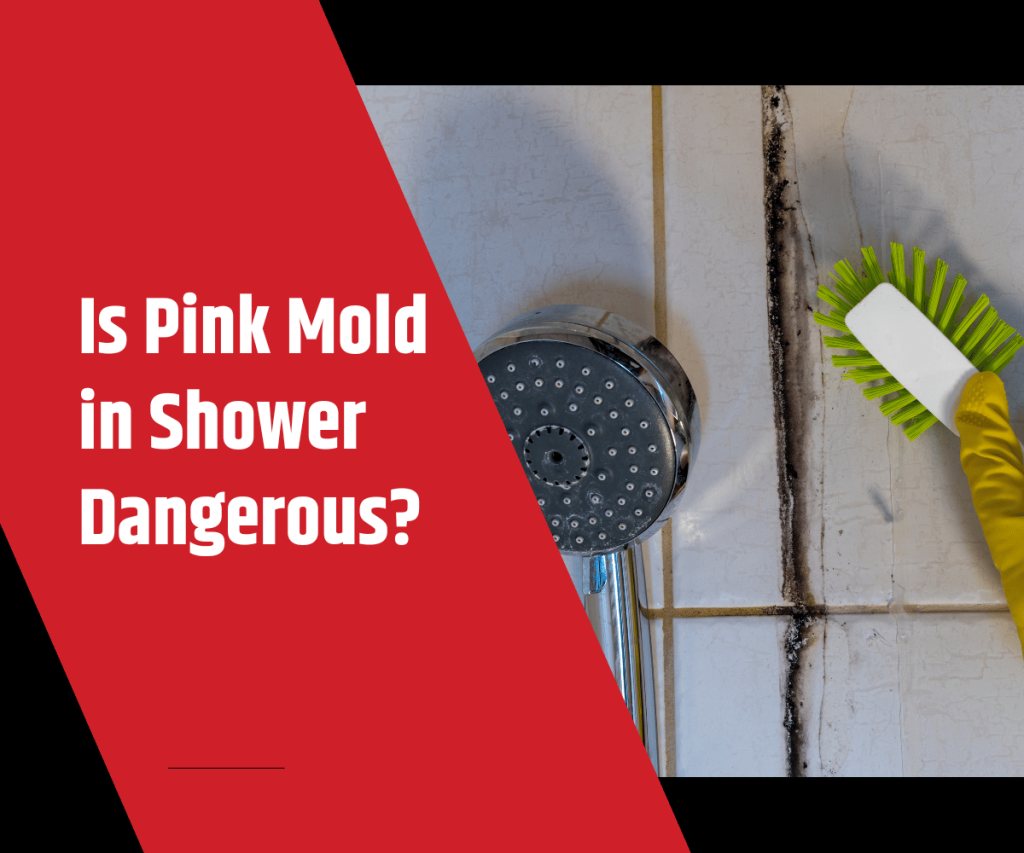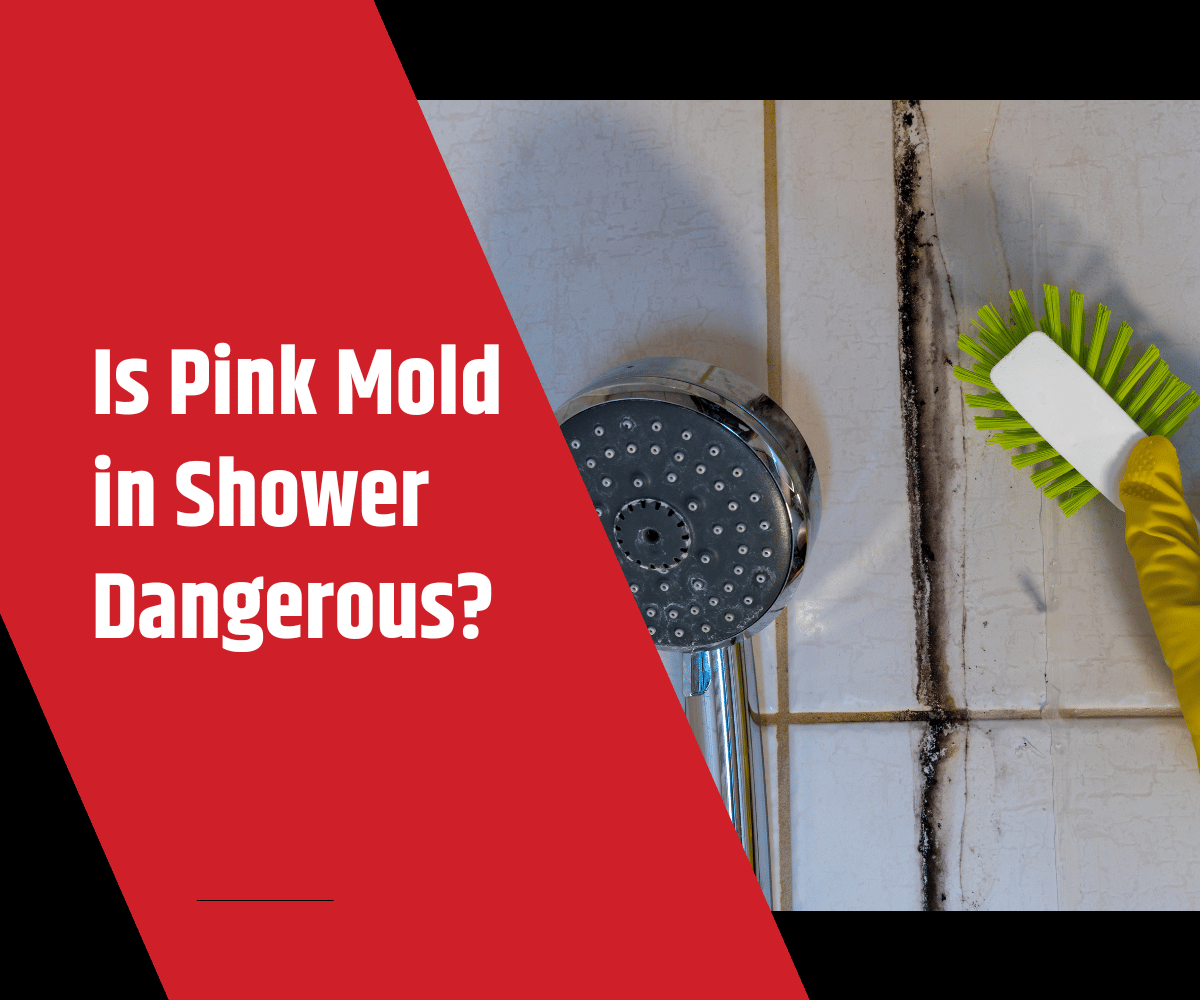
Is Pink Mold in Shower Dangerous?
Pink streaks in the shower may not look threatening, but they can lead to serious problems. If you’re wondering is pink mold in shower dangerous, the answer is yes—especially if ignored for too long. At Bowers Plumbing & Remodel, we help homeowners in Puyallup and across King and Pierce Counties understand what pink mold is, why it shows up in bathrooms, and how to get rid of it for good. Here’s everything you need to know.
What Is Pink Mold?
Despite its name, pink mold isn’t actually mold. The most common culprit is Serratia marcescens, a bacteria that thrives in moist, nutrient-rich environments. This pink-colored substance is often mistaken for typical bathroom mildew or mold pink but has its own unique set of risks.
Common Bacterial Types Mistaken for Mold:
- Serratia marcescens (most common)
- Aureobasidium pullulans
- Fusarium
These bacterial organisms often appear as slimy, pink-to-orange discoloration and are drawn to damp environments where soap and grime accumulate.
Where It Grows:
- Grout lines
- Shower curtains and liners
- Tile and tub surfaces
- Shower walls
- Bathroom drains and fixtures
The bacteria feed off soap residue, body oils, and mineral deposits—making your bathroom a perfect breeding ground.
What Causes Pink Mold to Grow in Your Shower?
Understanding the root causes helps prevent future infestations. Pink mold growth is influenced by multiple contributing factors:
- Moisture and humidity: lingering water and wet environments fuel bacteria
- Lack of air circulation: poor ventilation extends drying time and supports mold growth
- Nutrient sources: soap scum, shampoos, and conditioners promote bacterial colonies
- Mineral buildup: hard water leaves residue that attracts mold
- Infrequent cleaning: skipping cleaning routines leads to biofilm formation
These bacteria can easily spread via air and water droplets, clinging to porous and nonporous surfaces alike.
Is Pink Mold in the Shower Dangerous?
The most common question— is pink mold in shower dangerous —deserves a clear answer: it can be. Although not as hazardous as black mold, pink mold still poses health concerns.
Health Risks:
Pink mold can become problematic when inhaled, touched, or spread via contaminated surfaces. Those most vulnerable include:
- People with asthma or respiratory conditions
- Individuals with weakened immune systems
- Those with open cuts or wounds
- Contact lens users exposed to moldy air
Possible Health Problems:
- Skin infections from contact
- Respiratory infections including pneumonia or bronchitis
- UTIs and bladder infections from exposure
- Eye infections, especially for contact lens users
- Digestive problems such as nausea, cramps, or diarrhea
Exposure to harmful bacteria in mold-laden bathrooms can elevate these dangers significantly. So, is pink mold in shower dangerous? The answer continues to be a clear yes.
Signs of Pink Mold in the Shower
Identifying pink mold early helps limit exposure and makes cleaning easier. Here are the telltale signs:
- Pink or reddish-orange film on tiles, caulk, or fixtures
- Slippery or slimy texture on bathroom surfaces
- Recurring discoloration after previous cleaning
- Musty or unpleasant odor around tub, shower, or bathroom drains
If you ever find yourself asking again, is pink mold in shower dangerous, remember that these signs are warnings not to ignore.
Can Pink Mold Keep Coming Back?
Yes, it absolutely can—and often does. Pink mold returns when the underlying conditions that support its growth are not addressed. If you’re still wondering is pink mold in shower dangerous over time, repeated exposure due to regrowth only increases the risks.
Why It Reappears:
- Leftover moisture that wasn’t dried properly
- Surface cleaning only, without disinfection
- Persistent humidity from lack of air circulation
- Plumbing issues like unseen leaks behind walls or under tubs
Breaking the Cycle:
- Dry surfaces after each shower
- Disinfect regularly with strong cleaning solutions
- Address plumbing issues such as leaky fixtures or drains
- Improve ventilation in the home
Without these changes, pink shower mold will likely continue to return.
How to Get Rid of Pink Mold in the Shower
Successfully removing pink mold involves a multi-step cleaning approach. Done correctly, this not only eliminates the bacteria but also reduces the chance of recurrence.
Step 1: Prioritize Safety
- Wear rubber gloves to protect your skin
- Use goggles and a mask to limit inhalation of spores and fumes
- Ventilate the area by opening windows or running the exhaust fan
Step 2: Prepare a Cleaning Solution
Select one of the following cleaning solutions based on surface and severity:
- Bleach or chlorine-based products
- Hydrogen peroxide for gentler use on some surfaces
- Baking soda followed by vinegar (do not mix with bleach)
- Dish soap with hot water for light mold removal
Apply solution using a spray bottle or sponge. Make sure not to mix incompatible chemicals.
Step 3: Scrub Affected Areas
- Use a soft or stiff brush depending on the bathroom surface
- Focus on grout, tub corners, tile cracks, and fixture bases
- Rinse thoroughly with clean water to remove residue
Step 4: Disinfect Thoroughly
Once pink mold is scrubbed away, apply disinfectant to ensure bacteria removal:
- Spray disinfectant across affected zones
- Wash or soak shower curtains and liners
- Replace porous items that might harbor lingering mold
Step 5: Dry Everything Completely
- Squeegee walls, glass, and tile after use
- Use a towel to remove water from crevices
- Run exhaust fans for at least 30 minutes post-shower to minimize moisture
Dry environments answer the question of is pink mold in shower dangerous with prevention as the best defense.
How to Prevent Pink Mold in the Shower
Taking consistent action to eliminate moisture and reduce bacteria buildup will keep pink mold at bay.
Improve Ventilation
- Run an exhaust fan during and after every shower
- Open windows regularly to improve air quality in the bathroom
- Use a dehumidifier in high-humidity areas of the home
Keep Surfaces Dry
- Squeegee glass and tile after bathing
- Remove shampoo bottles and sponges to dry separately
- Towel-dry wet surfaces to avoid mold growth
Clean Regularly
- Clean with mold-inhibiting or antibacterial cleaners
- Disinfect with bleach or hydrogen peroxide monthly
- Keep drains clear to prevent standing water
Address Plumbing Issues Promptly
Bowers Plumbing & Remodel regularly solves moisture issues at their source:
- Fixing leaky showerheads or pipes
- Drain cleaning to remove clogs
- Repairing hidden plumbing faults behind walls or under floors
Conduct Regular Inspections
- Check corners, grout lines, and caulking for signs of pink discoloration
- Watch for moisture accumulation near the tub or shower
- Monitor water pressure and strange odors
Ask yourself regularly: is pink mold in shower dangerous to your family’s health? If you find even the smallest signs of it returning, take action.
Why DIY Isn’t Always Enough
While basic cleaning helps in the short term, sometimes professional plumbing support is necessary to prevent mold from reappearing. If the situation keeps escalating, the answer to is pink mold in shower dangerous will only become more concerning.
Call in experts if:
- The pink mold shower area exceeds three square feet
- Pink shower mold returns after deep cleaning
- You suspect mold hidden inside walls or vents
- There are related plumbing issues contributing to growth
Our Shower Plumbing Services Can Help
At Bowers Plumbing & Remodel, our services tackle the root causes of mold recurrence in your bathroom. We ensure long-lasting mold prevention by improving your plumbing system.
We Offer:
- Leak repair to fix moisture-inducing issues
- Drain cleaning for better water flow and mold prevention
- Shower fixture maintenance to eliminate water waste
- Mold source inspections to track hidden issues behind bathroom walls
Still wondering is pink mold in shower dangerous for your home? Our team ensures your home remains clean, safe, and free of pink mold hazards.
Providing Plumbing and Remodeling Work in Puyallup and Elsewhere in King County and Pierce County
Our friendly staff at Bowers Plumbing & Remodel is always ready to assist with your plumbing and remodeling needs. We proudly serve Puyallup and surrounding areas throughout King and Pierce Counties. Whether you contact us during business hours or after, you can count on a prompt response—same day or the very next.
Why Homeowners Trust Us:
- Locally and family owned
- Experienced, high-integrity team
- Quality work backed by satisfaction guarantee
From emergency leaks to full fixture replacements, we’re your one-stop shop for all things plumbing and remodeling. We also offer free plumbing consultations, so you can make informed decisions about your home.
Ready to stop pink mold at its source? Give us a call at (253) 600-3015 to schedule service today.
Licenses
General Construction Contractor’s: License no. BOWERPL854MA
Residential Plumbing Contractor: License no. BOWERPL782D3





